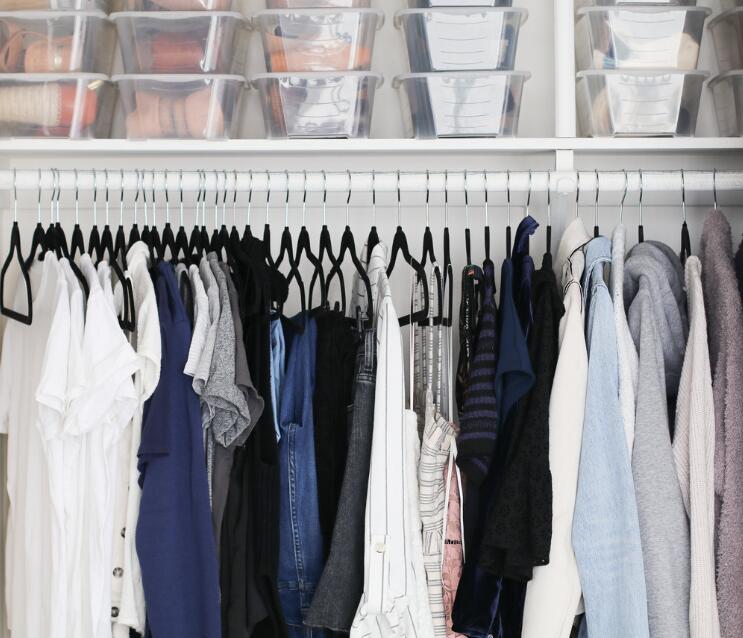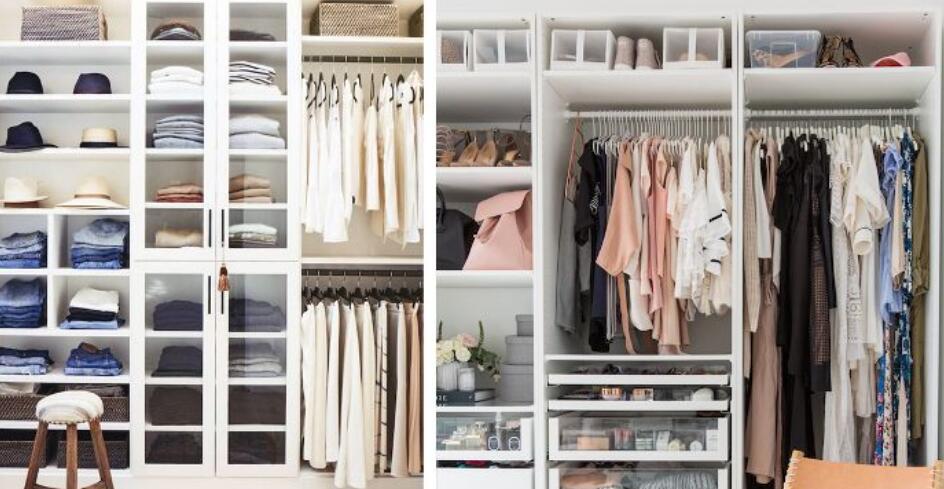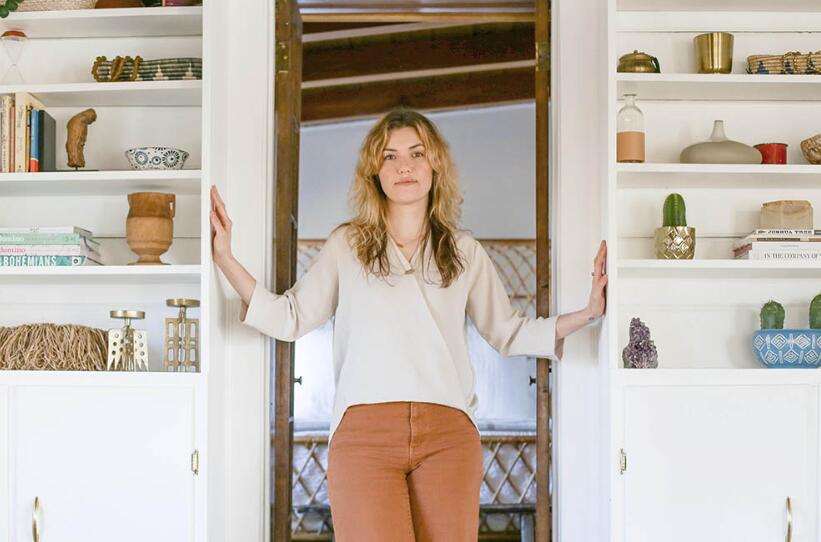In this article, we will explore the transformative power of minimalism through The 30-Day Decluttering Challenge. Discover the physical, mental, and environmental benefits of embracing a clutter-free lifestyle and learn practical strategies to create intentional spaces. Join us on this journey to unleash the power of minimalism in your life.
Understanding the Clutter Chaos
1.1 The dark side of clutter:
Highlighting the negative consequences of living in a cluttered environment.
Living in a cluttered space can have detrimental effects on our physical and mental well-being. It creates visual chaos, making it difficult to find what we need and causing stress and frustration in our daily lives. Clutter also contributes to feelings of overwhelm, as we become surrounded by an excess of possessions that demand our attention and energy. Furthermore, studies have shown that clutter can negatively impact our ability to focus and concentrate, leading to decreased productivity and efficiency.
1.2 The psychology behind clutter:
Unveiling the reasons behind why we accumulate clutter.
Clutter has a deep psychological impact on our lives, often revealing underlying emotional attachments and fears. Many people develop sentimental connections to objects, associating them with memories or a sense of identity. Additionally, our consumerist culture constantly bombards us with messages persuading us to acquire more, leading to an accumulation of possessions that may not align with our true needs and desires. Fear of letting go and the belief that we might need something in the future are also common reasons why clutter tends to persist.
Crafting a Plan for Success
2.1 Setting your decluttering goals:
Defining your vision and identifying specific objectives for the 30-day challenge.
Before embarking on the decluttering journey, it’s essential to establish clear goals. Consider what a clutter-free space means to you personally, whether it’s a calm and organized sanctuary or a more minimalist and streamlined aesthetic. These goals will guide your decision-making process and keep you motivated throughout the challenge. Remember to be realistic and prioritize the areas or categories in your home that require the most attention.
2.2 Preparing for success:
Gathering necessary tools and resources to facilitate the decluttering process.
Equipping yourself with the right tools will make the decluttering process smoother and more efficient. Some essential items to have on hand include boxes or bins for sorting items, garbage bags for discarding, and labels for categorizing. Additionally, consider investing in storage solutions such as shelves, baskets, or drawer dividers to optimize space and maintain organization once the challenge is complete.
2.3 Tracking your progress:
Using visual cues and documentation to monitor your achievements.
Take “before” pictures of the areas you plan to declutter. These images will not only serve as a reminder of the starting point but also provide a visual representation of your progress. As you declutter each space, take pride in capturing the transformation in your “after” photos. You can also keep a journal or checklist to document the specific tasks you complete each day, allowing you to appreciate the milestones achieved during the 30-day challenge.
Taking Action – The 30-Day Decluttering Challenge
3.1 Day 1-5: Start small and build momentum
Begin with smaller areas or categories that are more manageable and less overwhelming.
Days 1 to 5 are crucial for building momentum and establishing a decluttering routine. Focus on areas like drawers, closets, or countertops that can be tackled in a shorter amount of time. Sort items into three categories: keep, donate/sell, and discard. Make decisions based on practicality, functionality, and the joy a particular item brings to your life. Remember to celebrate small victories along the way.
3.2 Day 6-15: Digging deeper and addressing larger spaces
Shift gears by decluttering larger spaces like bedrooms, living rooms, or home offices.
Days 6 to 15 present an opportunity to dive into more substantial spaces that require more time and effort. Break down these larger areas into smaller sections and tackle them systematically. Sort through belongings, letting go of items that haven’t been used or don’t align with your goals and vision. Utilize effective storage solutions to keep things organized and visually appealing.
3.3 Day 16-25: Embracing the sentimental and challenging areas
Confront sentimental items and challenging spaces that may be emotionally difficult to declutter.
Days 16 to 25 may involve dealing with sentimental items, such as photographs, keepsakes, or personal mementos. Approach these items with thoughtfulness and consider their true significance in your life. Allow yourself to keep meaningful items but aim to create a curated collection that truly brings you joy. Additionally, address challenging areas like the garage, attic, or storage rooms, where clutter tends to accumulate over time.
3.4 Day 26-30: Fine-tuning and maintaining a clutter-free lifestyle
Complete the challenge by fine-tuning spaces and implementing strategies to prevent future clutter.
Days 26 to 30 are dedicated to fine-tuning your decluttered spaces and establishing habits to maintain a clutter-free lifestyle. Assess each area and identify any remaining items that can be further minimized or organized. Take the time to clean and refresh the spaces, creating a sense of renewal. Develop habits such as regular decluttering sessions, mindful purchasing, and utilizing storage solutions to prevent clutter from accumulating again.
Here’s a detailed plan for a 30-day decluttering challenge:
Week 1: Creating a Foundation
Day 1: Kick-off and Goal Setting
– Set your decluttering goals for the challenge.
– Define what a clutter-free space means to you.
– Take “before” pictures to track progress.
Day 2: Decluttering the Wardrobe
– Assess your wardrobe and remove clothes and accessories you no longer wear or love.
– Sort items into donate, sell, or discard piles.
– Organize remaining clothes and optimize storage space.
Day 3: Streamlining the Bookshelf
– Evaluate your book collection and donate or sell books you no longer read or need.
– Arrange remaining books in a logical and aesthetically pleasing way.
– Consider going digital with e-books to minimize physical clutter.
Day 4: Tackling Paperwork and Documents
– Sort through stacks of papers and file or shred unnecessary documents.
– Organize important papers into folders or digital storage.
– Set up a system for handling incoming papers to prevent future clutter.
Day 5: Clearing Kitchen Counters and Cabinets
– Purge expired food, unused gadgets, and duplicate kitchen items.
– Reorganize cabinets and drawers for better accessibility.
– Create designated spaces for commonly used items.
Week 2: Room-by-Room Transformation
Day 6: Revitalizing the Living Room
– Declutter surfaces, including coffee tables, shelves, and entertainment centers.
– Remove or donate decor items that no longer spark joy.
– Arrange furniture for better flow and functionality.
Day 7: Decluttering the Bathroom
– Discard expired toiletries, old towels, and unused beauty products.
– Organize remaining items by category (e.g., skincare, haircare) for easy access.
– Utilize storage solutions to maximize space.
Day 8: Organizing the Home Office
– Sort through paperwork, office supplies, and electronics.
– Create an efficient filing system and organize desk drawers.
– Set up a designated workspace for increased productivity.
Day 9: Simplifying the Bedroom
– Declutter nightstands, dressers, and under-bed storage.
– Donate or discard clothes that no longer fit or bring joy.
– Create a calming and minimalist bedroom environment.
Day 10: Tidying up the Kids’ Space
– Involve children in decluttering their toys and books.
– Teach them the value of tidiness and letting go of unused items.
– Arrange toys and books in easily accessible storage solutions.
Week 3: Nooks and Crannies
Day 11: Clearing Out the Garage
– Sort tools, equipment, and seasonal items.
– Dispose of broken or unused items.
– Organize remaining items and create zones for different categories.
Day 12: Decluttering the Attic or Basement
– Assess stored items and discard or donate what is no longer needed.
– Utilize storage bins or shelving to organize remaining items.
– Create a functional space for easy access.
Day 13: Taming the Digital Clutter
– Clean up your computer desktop, organizing files into folders.
– Delete unnecessary files and programs.
– Backup important data and streamline email inbox.
Day 14: Simplifying the Linen Closet
– Assess and discard worn-out or mismatched linens.
– Organize sheets, towels, and blankets by category.
– Maximize space with storage bins or vacuum-sealed bags.
Day 15: Clearing Out Miscellaneous Spaces
– Declutter miscellaneous areas like the hallway, entryway, or storage room.
– Assess what needs to be kept, donated, or discarded.
– Designate a place for everyday items like keys, shoes, or coats.
Week 4: Final Touches and Reflection
Day 16: Cleaning and Maintenance
– Deep clean and refresh the decluttered spaces.
– Dust shelves, vacuum floors, and wipe down surfaces.
– Set up a cleaning routine to maintain the clutter-free environment.
Day 17: Digital Detox
– Unsubscribe from unnecessary email lists and delete unused apps.
– Limit social media usage and declutter your digital devices.
– Establish healthy boundaries for technology in your life.
Day 18: Self-Care and Mindful Practices
– Make time for self-care activities like meditation, journaling, or yoga.
– Reflect on the decluttering journey and its impact on your well-being.
– Identify ways to bring mindfulness and simplicity into other areas of your life.
Day 19: Share Your Success
– Celebrate your achievements and share your decluttering journey with others.
– Inspire friends or family to embark on their own decluttering challenges.
– Join online communities or forums to continue learning and staying motivated.
Day 20: Final Evaluation and Future Plans
– Reflect on the entire 30-day decluttering challenge.
– Evaluate the impact of decluttering on your physical and mental well-being.
– Make plans to sustain a clutter-free lifestyle and continue simplifying your life.
Sustaining a Minimalist Lifestyle
4.1 Creating intentional spaces:
Tips and strategies for designing and organizing spaces with intention and purpose.
To sustain a minimalist lifestyle, it’s essential to create intentional spaces that align with your goals and values. Consider the functionality and purpose of each area in your home, and design them accordingly. Utilize storage solutions to keep belongings organized and easily accessible. Adopt a “one in, one out” rule to prevent clutter from accumulating. Regularly evaluate your possessions and let go of items that no longer serve a purpose or bring you joy.
4.2 Mindful consumption:
Developing mindful and intentional consumption habits to avoid falling back into clutter.
Mindful consumption is a key aspect of sustaining a minimalist lifestyle. Before making a purchase, ask yourself if the item aligns with your needs and values. Consider the long-term value of the item and its impact on your space and well-being. Prioritize quality over quantity, opting for durable and long-lasting items. Practice gratitude for the possessions you already have, cultivating contentment and reducing the desire for excessive accumulation.
4.3 Embracing minimalism beyond physical possessions:
Expanding the principles of minimalism to other areas of life, such as digital clutter and commitments.
Minimalism extends beyond physical possessions. Apply minimalist principles to digital clutter by organizing files, decluttering emails, and streamlining your digital devices. Evaluate your commitments and prioritize activities that align with your values and bring you joy. Learn to set boundaries and say no to avoid overloading your schedule. Embrace the concept of “slow living” by intentionally creating moments of rest, relaxation, and self-care.
Conclusion
Congratulations on completing The 30-Day Decluttering Challenge! By embarking on this journey, you have taken significant steps towards unleashing the power of minimalism in your life. Throughout the challenge, you have learned how to set decluttering goals, prepare for success, track your progress, and take action to create a clutter-free environment.
By embracing minimalism, you have experienced the physical, mental, emotional, and environmental benefits it brings. A clutter-free and intentional space provides a sense of calm, enhances your well-being, and allows you to focus on what truly matters. Additionally, you have developed mindful consumption habits, learned to create intentional spaces, and applied the principles of minimalism to other areas of your life.
Remember that sustaining a minimalist lifestyle requires ongoing effort and commitment. Continue to evaluate your possessions regularly, practice mindful consumption, and prioritize experiences and relationships over material possessions. Embrace minimalism as a way of life, both in your physical and mental spaces, and enjoy the freedom and contentment it brings.
Thank you for participating in The 30-Day Decluttering Challenge. May your journey towards minimalism bring you joy, peace, and a renewed sense of purpose.



